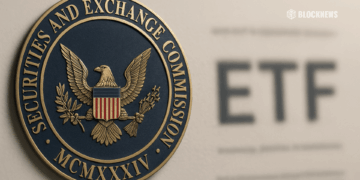- Tradeteq, a UK financial tech company, has just released a new kind of digital asset—tokens representing U.S. Treasury bonds, specifically for pro investors.
- The tokenization of real-world assets like U.S. Treasury bonds is gaining momentum, potentially altering the financial industry landscape and promising enormous market growth.
- The XDC Network is the newest contender in a field of blockchain networks vying to host these kinds of tokenized assets, challenging current leaders Ethereum and Stellar.
On August 29, 2023, UK-based financial tech company Tradeteq rolled out a game-changing financial instrument—digital tokens that stand for U.S. Treasury bonds. These tokens, named U.S. Treasury Yield (USTY), operate on the XDC Network and are aimed squarely at professional investors.
Exclusively available on Tradeteq’s own platform, Yieldteq, the USTY tokens are digital equivalents of shares in a U.S. Treasury bond exchange-traded fund (ETF). To make this intricate process smooth, Tradeteq is working closely with Securitize, a firm proficient in managing share ownership, getting new clients on board, and controlling dividend payouts.
The timing of this introduction couldn’t be better. Tokenization—converting physical assets into digital tokens—is making waves in the digital asset sector, despite recent setbacks. Financial experts, such as those working at Bank of America and Bernstein, are anticipating a transformative effect on the financial industry due to the rise of tokenized assets. Market growth predictions are ambitious, with Bernstein suggesting the possibility of reaching a $5 trillion valuation in the next five years.
Recent data from rwa.xyz reveals an explosive growth in interest for tokenized U.S. Treasury bonds. With an approximate sixfold increase in demand, the market has already hit $622 million this year. It seems the primary force behind this growth is the involvement of cryptocurrency companies and investment funds. They appear to be capitalizing on improved rates for government bonds, especially when cryptocurrency lending rates have taken a nosedive.
The arrival of USTY tokens on the XDC Network points to an expanding battlefield where blockchain platforms vie for hosting rights of tokenized assets. While Ethereum and Stellar currently have the upper hand in this arena, other networks are catching up fast. For example, JPMorgan has conducted trades in tokenized versions of the Japanese yen and the Singapore dollar using the Polygon network. Also, Securitize has issued tokens symbolizing shares in real estate investment trusts via the Avalanche blockchain.
The move by Tradeteq to introduce USTY tokens places the XDC Network on the map and points to a future where traditional financial products and digital assets might not just coexist but intertwine.
New Treasury Rules Target Crypto Tax Gap
The U.S. Treasury Department is taking significant steps to regulate the volatile cryptocurrency sector by announcing a series of new measures set to be implemented in 2025. These include obligatory reporting of digital asset sales and exchanges by cryptocurrency brokers to the Internal Revenue Service (IRS) through a new form, Form 1099-DA. The form is designed to simplify tax calculations for those dealing in digital currencies and non-fungible tokens (NFTs). The move brings crypto brokers under the same tax obligations as their counterparts in traditional finance, encompassing a broad spectrum of platforms from centralized to decentralized.
The department aims to narrow the “tax gap,” the discrepancy between taxes due and those actually collected, identifying the unregulated crypto sector as a key contributor. Experts estimate that these measures could rake in an additional $28 billion in tax revenue over a ten-year period. The initiative is part of a broader push to weave digital assets into the financial regulatory fabric, particularly after a series of market setbacks led to massive losses for investors.














